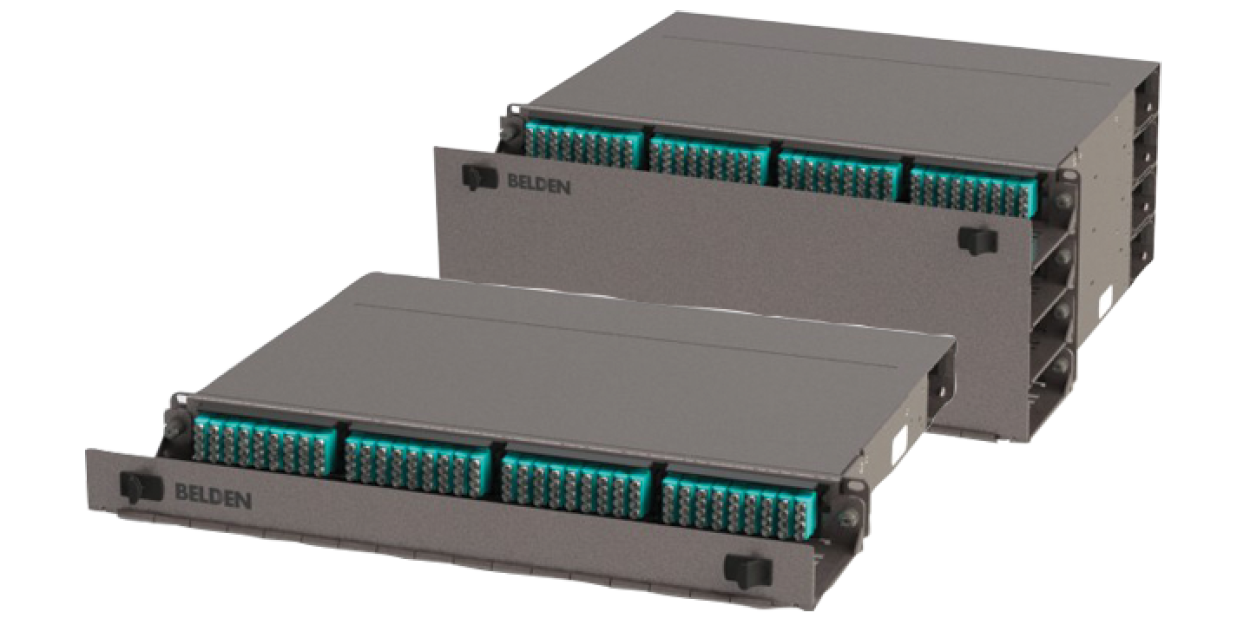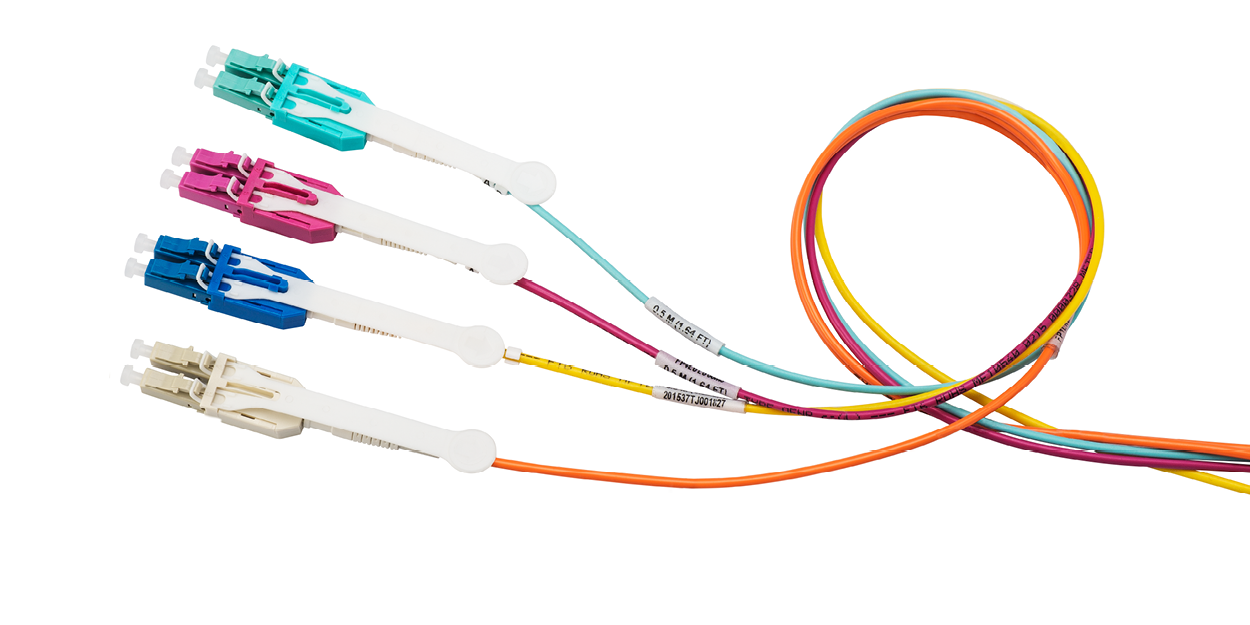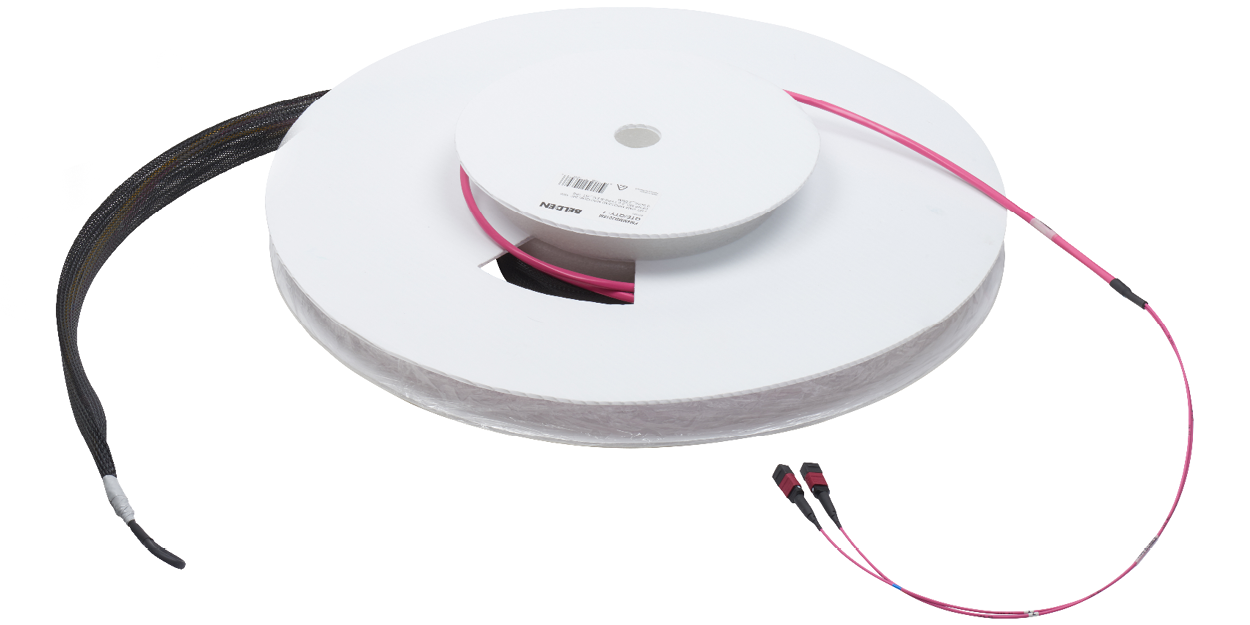High Density and Easy Cable Management Can Go Hand in Hand
New technology advances in networking, such as 40G, 100G and 400G Ethernet solutions, mean that data center administrators face new challenges: maintaining high availability, reducing costs, seeking out higher efficiencies and planning for future growth.
But as you pursue these goals to maximize density, capacity and performance, cable management can get out of hand.
High-density fiber connectivity products are the key to making high density a reality without sacrificing streamlined, cost-efficient cable management. Our motto: Look for products that are faster to use, easier to use and better to use.
Here’s a breakdown of the high-density fiber connectivity components that make up a data center, and the features that can ensure easy cable management along the way.
High-Density Patch Panels/Housings

The right high-density patch panel can provide fast, intuitive and easy deployment of high-density interconnects and cross-connects in data centers and LANs – all while conserving valuable rack space. Angled styles can also facilitate cable management practices as compared to standard patch panels.
Look for patch panels that don’t require tools to assemble the panel itself and/or remove cassettes and adapter frames. The need for tools slows installation time and increases costs.
Reconfigurable/adjustable panels with various mounting and attachment features can ensure that the patch panel works with your data center configuration without having to buy new components. A modular panel that provides the same cassette footprint with different densities and application types (pre-terminated, spliced, MPO Base-8, TAP cassettes, optimizer cassettes, splitter cassettes) can help you save space and encourage easy installation.
Superior port access with increased density can provide up to a 50% reduction in RU (rack unit) space. Also look for housing with an intuitive, modular design – this leads to fewer components and offers a single system that supports a variety of port counts and configurations. Ports should be identified through clear, visible labeling.
Highly accessible sliding and tilting drawers speed up field termination; drawers that can be removed without tools can also reduce installation time. If you’re looking for a pre-terminated solution, housing with simple fixed shelves and cassettes keep deployment time to a minimum.
Solutions that offer support for both legacy ST and SC and modern LC and MPO applications help support cost-effective migration to 40G and 100G applications with only a simple cassette or adapter frame change.
High-Density Patch Cords

Cabling density increases with the deployment of higher network speeds. Cables that offer a smaller overall diameter (OD) can improve cable management by installing in dense patch cord trays that take up less space. They also provide better airflow to maintain consistent operating temperatures, reducing the likelihood of failure or downtime.
Finger access to each patch cable becomes more difficult as cable density increases. To ensure easy access, look for high-density patch cords that are easy to remove through the use of a flexible pull-tab. These tabs can help increase cabling density and maintain reliability, preventing you from accidentally loosening surrounding connectors as you access the patch cord you need.
Patch cords should also be marked and easily accessible for faster fiber type identification. A great example: Belden’s Erika Violet for OM4 cable and connectors. Erika Violet cable, adapters and connector bodies are prominently displayed in pathways and at fiber panels, making it easy to tell the difference between OM3 and OM4 fiber.
High-Density Trunks

High-density trunks allow tighter trunk cable bends for slack storage and routing. When you can find high-density trunks that offer smaller/lighter transitions, less space is consumed and installation is easier. Cable pulling and cable management are improved when a cable with a smaller OD is used.
Look for a staggered, ergonomic design that allows easy access to connectors to install MPO trunks. A pulling eye can add efficiency and security when it’s time to move the trunks through densely packed ducts and conduits.
As with high-density patch cords, trunks should be marked for fast fiber type identification.
Belden Paves the Way
Our line of high-density fiber connectivity solutions supports easy, streamlined cable management so you’re not slowed down by installation time or high labor costs:
Learn more about Belden solutions that allow you to maintain high availability, reduce costs, seek out higher efficiencies and plan for future growth – all while maximizing density, capacity and performance.
What do you think of these cable management solutions?
Be sure to share in the comments section below!
